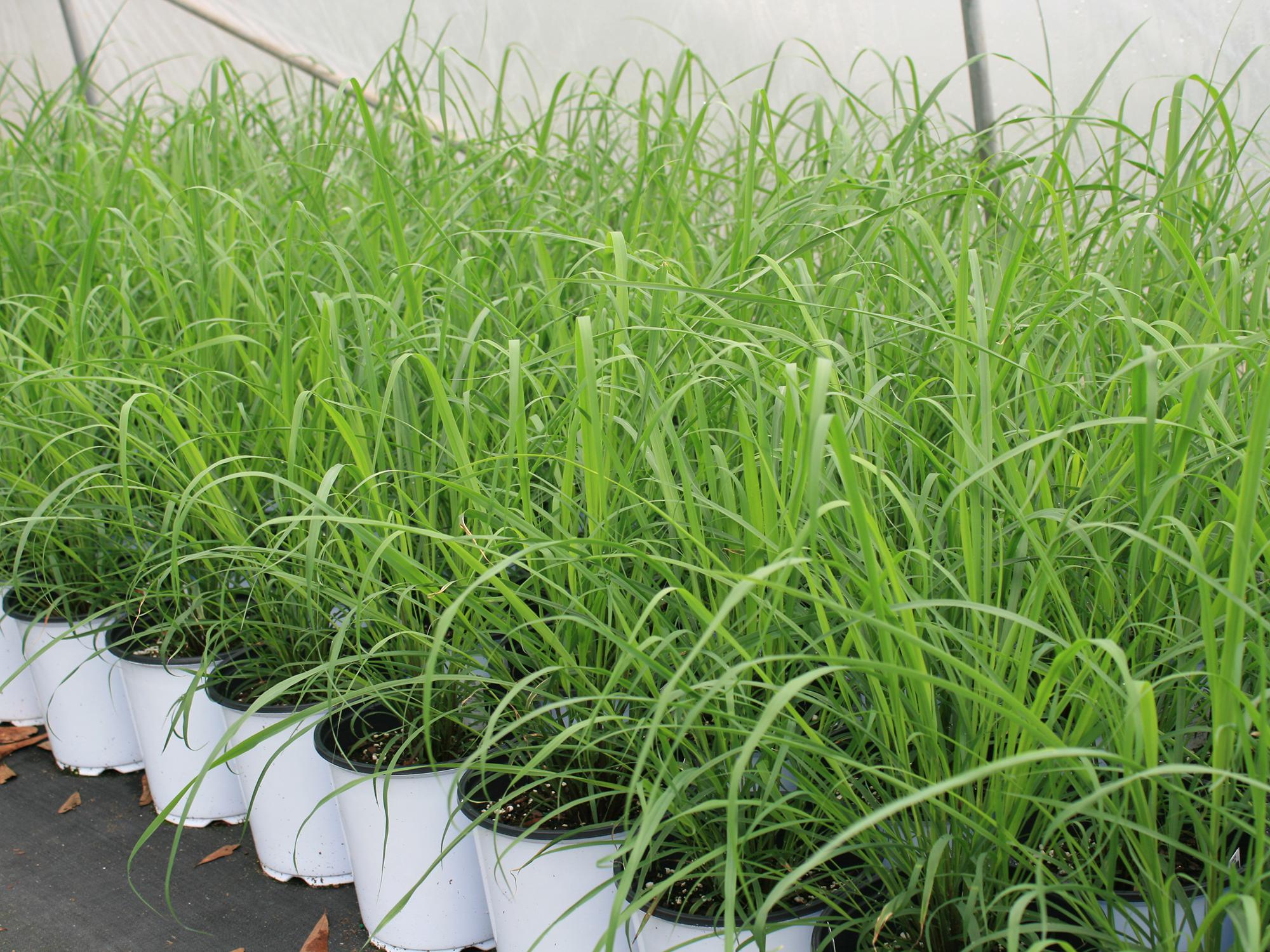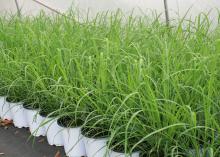Information Possibly Outdated
The information presented on this page was originally released on January 29, 2018. It may not be outdated, but please search our site for more current information. If you plan to quote or reference this information in a publication, please check with the Extension specialist or author before proceeding.
Use lemongrass as annual or perennial
Last week, I focused on the 2018 Mississippi Medallion Winner fancy leaf kale. This week, let’s look at a second 2018 winner: lemongrass.
Lemongrass is a tropical herb packed with a strong citrus flavor. It forms tall, grassy clumps ranging from 3 to 5 feet tall. Lemongrass is a great choice as an adaptable replacement for traditional ornamental grasses. It also is a must-have plant for the edible landscape.
The two species we have available both originated in Southeast Asia. East Indian lemongrass is native to Cambodia, India and Vietnam. West Indian lemongrass is native to Indonesia.
Garden centers commonly sell both species as lemongrass. This is okay because both can be used interchangeably, but the East Indian variety is the preferred culinary species. Seeds are readily available online if you want to try both species.
Since lemongrass is a tropical plant, it is susceptible to some of the winter temperature extremes we have from time to time. Sound familiar?
Lemongrass is a reliable perennial grass that survives normal winters in Mississippi hardiness zones 8b and 9a. However, it is perfectly happy and productive when planted as an annual or in containers in north Mississippi. I actually grow lemongrass in containers in my Ocean Springs garden.
Always plant in full sun for the best performance. Lemongrass needs fertile, well-drained soil, and it does not perform well in clay or other heavy soils. If you’re not going to grow your lemongrass in a container, a raised bed is the perfect alternative location.
Lemongrass can be a fairly large plant, so use 24-inch spacing when massing them in the landscape. For patio use, plant them in containers at least 12 inches across.
Lemongrass is low maintenance and has few pests. Much evidence suggests this plant may even help to repel mosquitos. Citronella oil is naturally found in lemongrass and is commonly used as a natural mosquito repellent. That makes lemongrass perfect for outdoor entertaining areas.
Lemongrass is a clumping grass that spreads by tillering. You can vegetatively propagate it by division, using a sharp hatchet or spade to divide tight clumps. Plant these divisions in new locations in your garden, or share them with neighbors and friends.
Lemongrass is often used in Asian cuisine and herbal teas. Harvest when the stalks are at least a quarter inch in diameter by cutting or simply twisting them off close to the ground.
The delicious, edible portion of lemongrass is near the base of the stalk under the tough, woody outer sheath. This tender base can be sliced, bruised or pounded into a paste. Leftovers can be frozen for later use.
I think if you try one lemongrass plant this year, you’ll enjoy it so much that you will grow more in the years to come.




